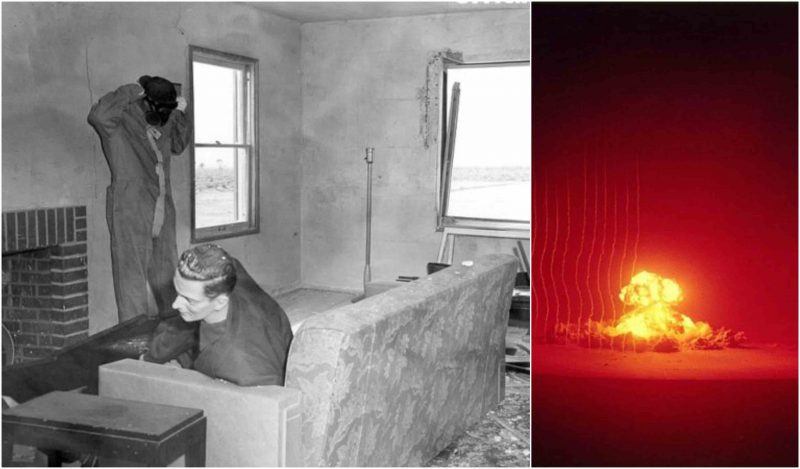Upshot-Knothole Annie is a 16-kiloton bomb used for series of nuclear tests conducted by the United States as part of Operation Upshot-Knothole.
The Operation Doorstep was a civil defense study of Federal Civic Defense Administration and the nuclear tests were taken in Nevada Test Site. Starting from 17th of March, 1953, the testing lasted 3 months.
On the date when the testing started, members of the press followed the first atomic detonation from nearby “News Nob”. There was also a live TV coverage recorded on a kinescope which today is one of the rare records of the sound an actual atomic bomb makes.
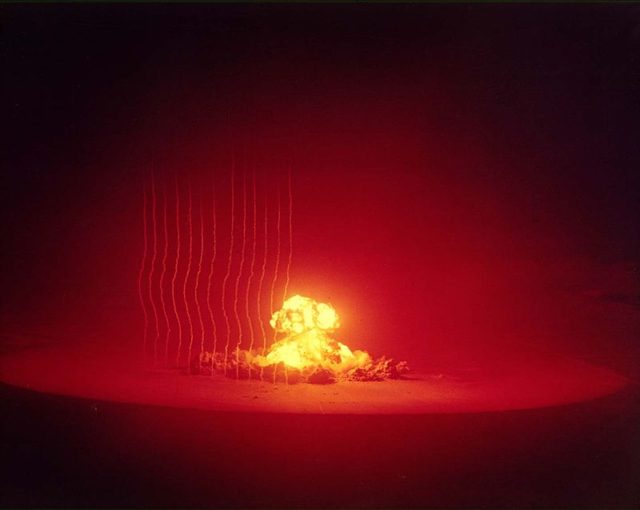
The goal of the Operation Doorstep was to test the safeness of people, their houses, vehicles and domestic items in a case of nuclear bombing.
So, F.C.D.A. officials constructed two houses at varying distances from ground zero and filled them with standard domestic items, many of which were donated by manufacturers eager to see how their products would fare under atomic attack.
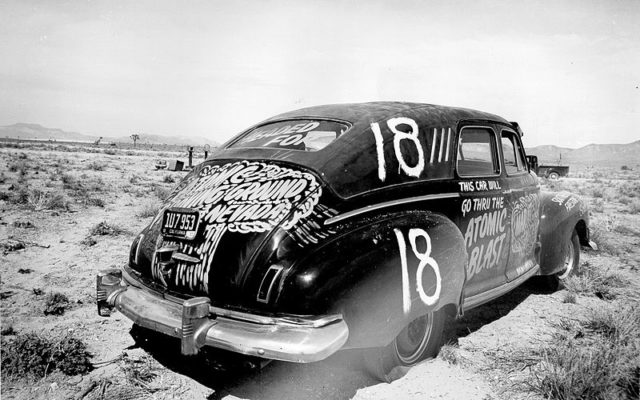
The homes in the study were constructed in such a way as to minimize the thermal effects of Annie, with an eye towards determining if, in the absence of fire, the basement of the closer home — 3,500 feet (1,100 m) from the hypocenter — might shelter its occupants while the second — at 7,500 feet (2,300 m) — could remain standing..
Both homes performed as expected under the conditions of their construction.
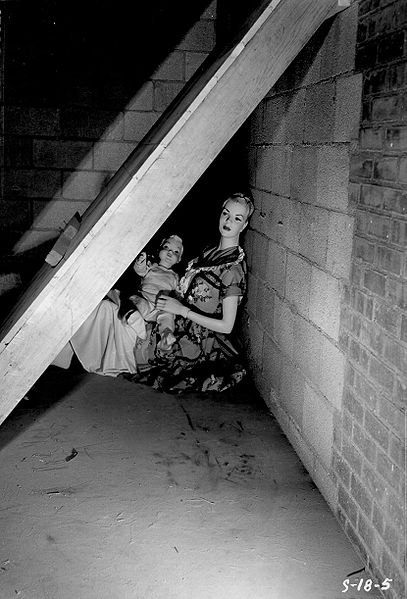
There were also strategically placed vehicles which were tested if they could offer any type of protection.
The administration concluded that if windows were left open to prevent the car collapsing on its occupants a car would be “relatively safe” from a small nuclear bomb if at least ten blocks away from the hypocenter.
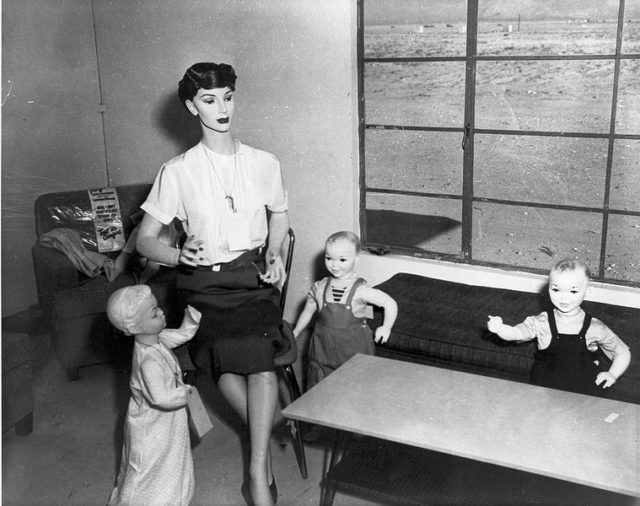
However, the main aim of the whole operation was to stimulate people to arrange or construct a “safe place” in or around their homes in a case of an enemy attack.
So the most interesting feature created for the testings were the conservatively dressed mannequins extensively posed in 1950s family settings to mimic human activity during an atomic attack and within shelters where they were “weighted” with sand.
These plaster men, women, and children were arranged into everyday scenes at their homes – a formal dinner party and a family gathered around a living room television as they were unaware of the following nuclear bombing in order for the F.C.D.A. to demonstrate the benefits of being prepared.
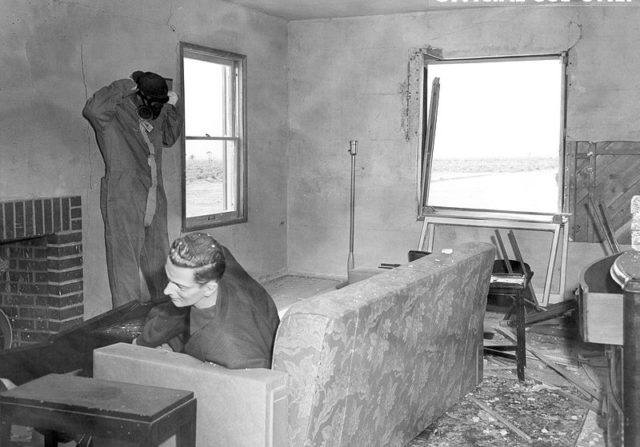
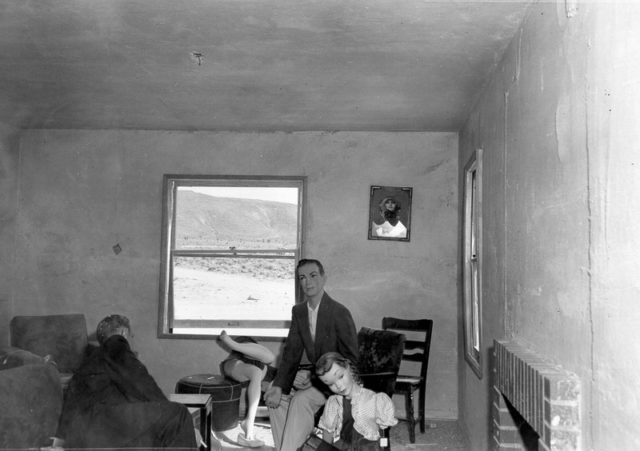
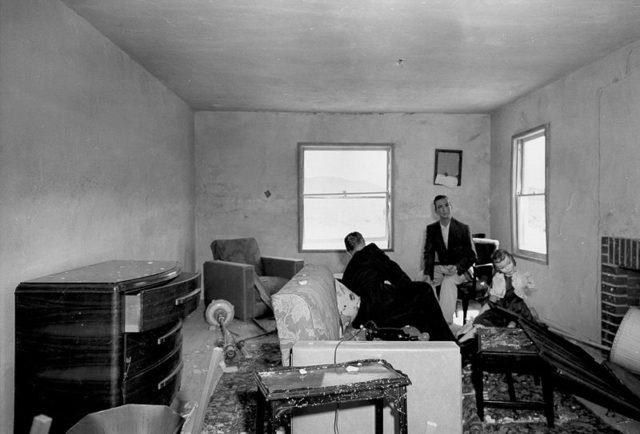
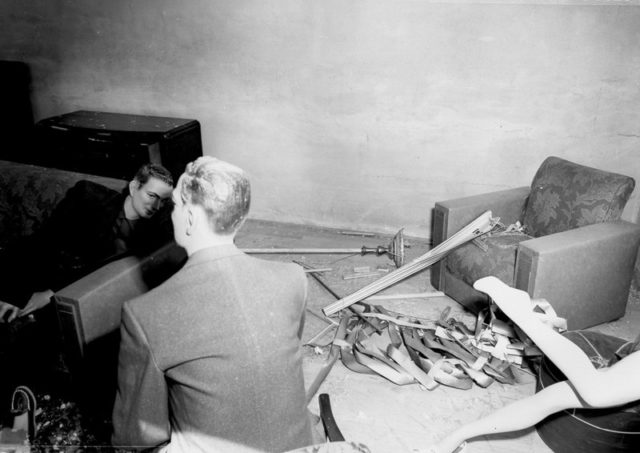
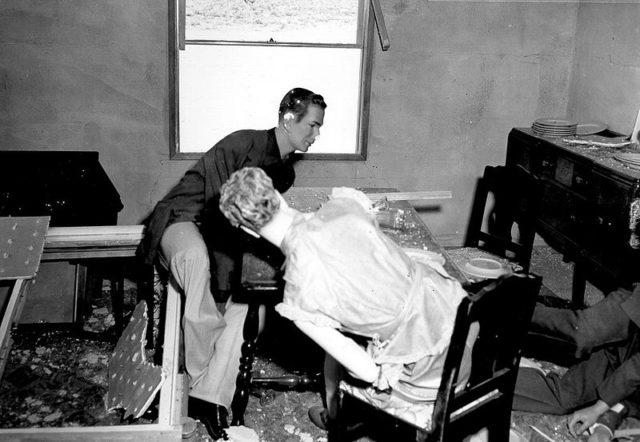
But despite the whole effort of alarming citizens to prepare themselves for the possible nuclear bombing, the danger of radioactive fallout is only briefly mentioned in the movie for which is said that it disperses quickly from the testing area.
This dismissal of the fallout threat would lead to the film being declared obsolete by 1959 when the government recalled all copies of it and encouraged private owners to cease screenings. For six years, however, Operation Doorstep remained a short, succinct, urgent call to action, asking the American citizen to rise to the challenge of civil defense preparation. “Or will you, like a mannikin, sit and wait?”
Operation Doorstep marked the first time “Civil Defense observers were allowed to witness a technical test program”
